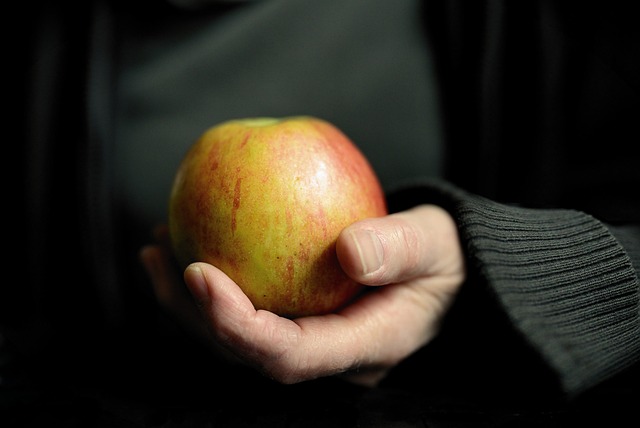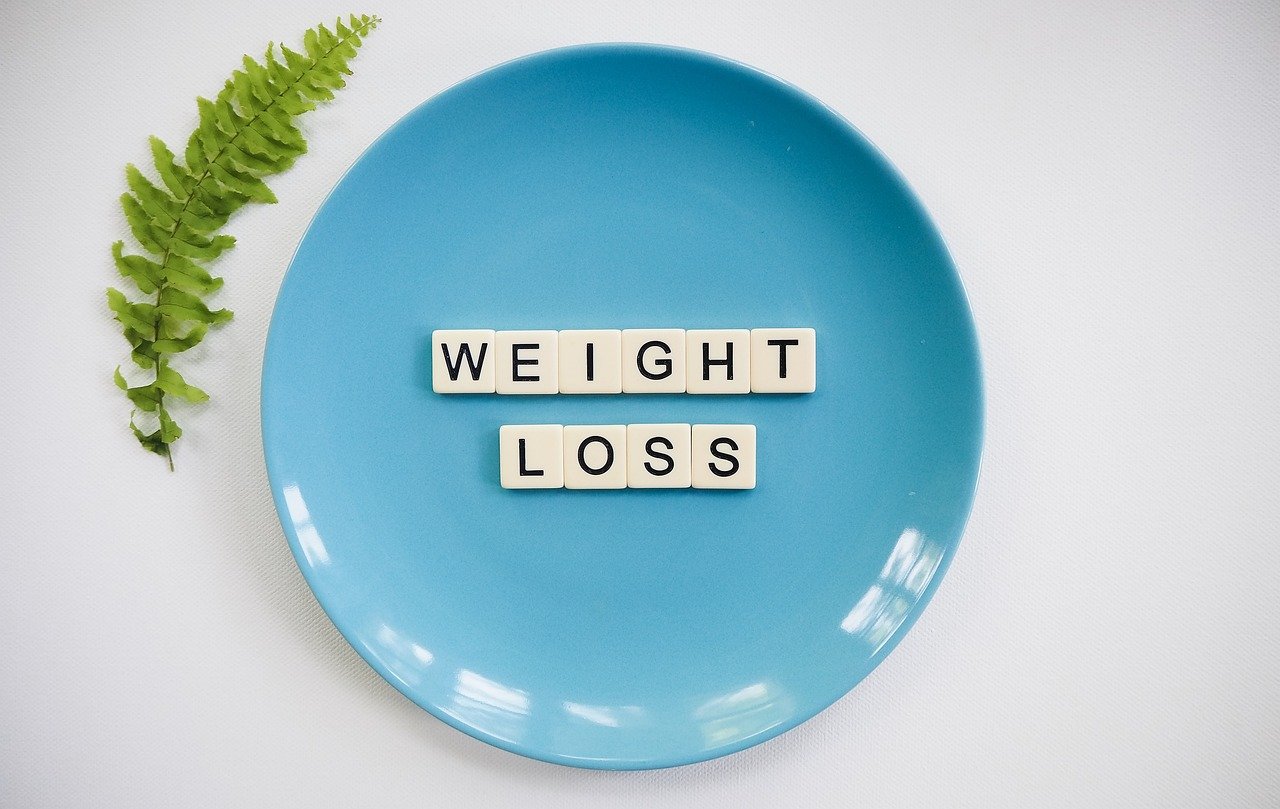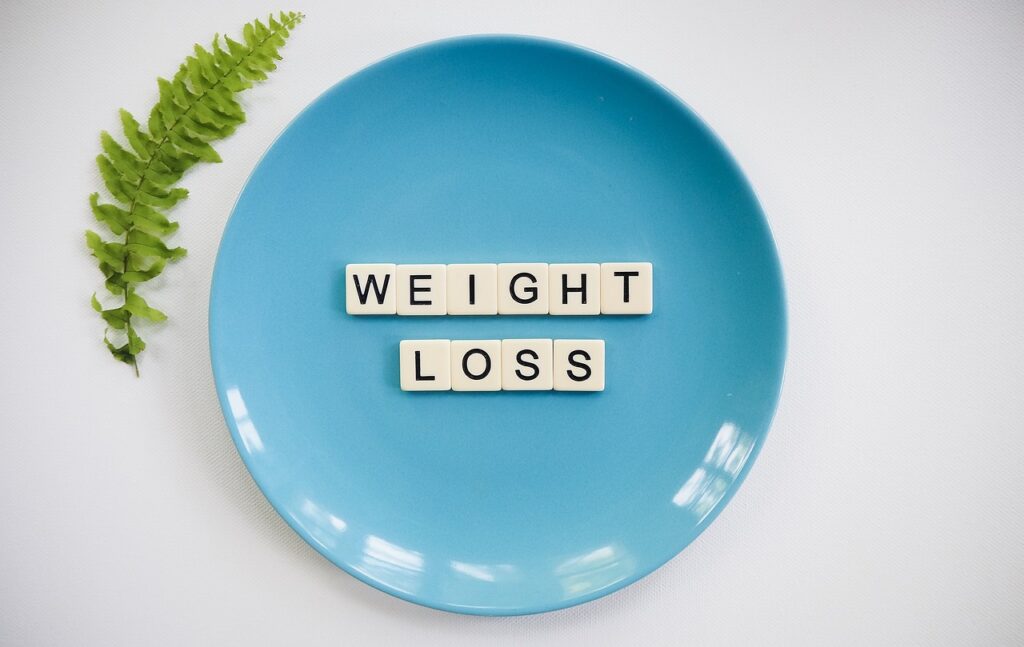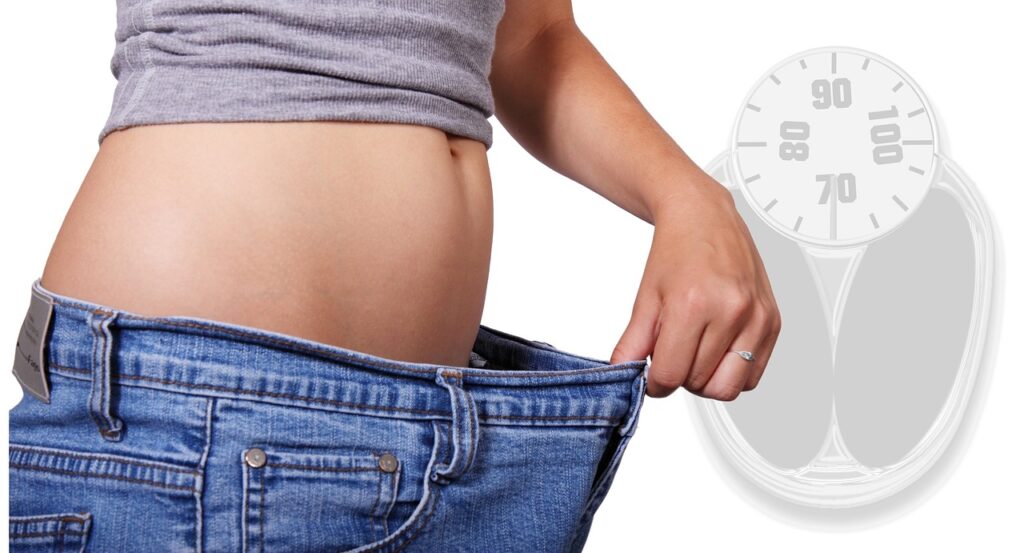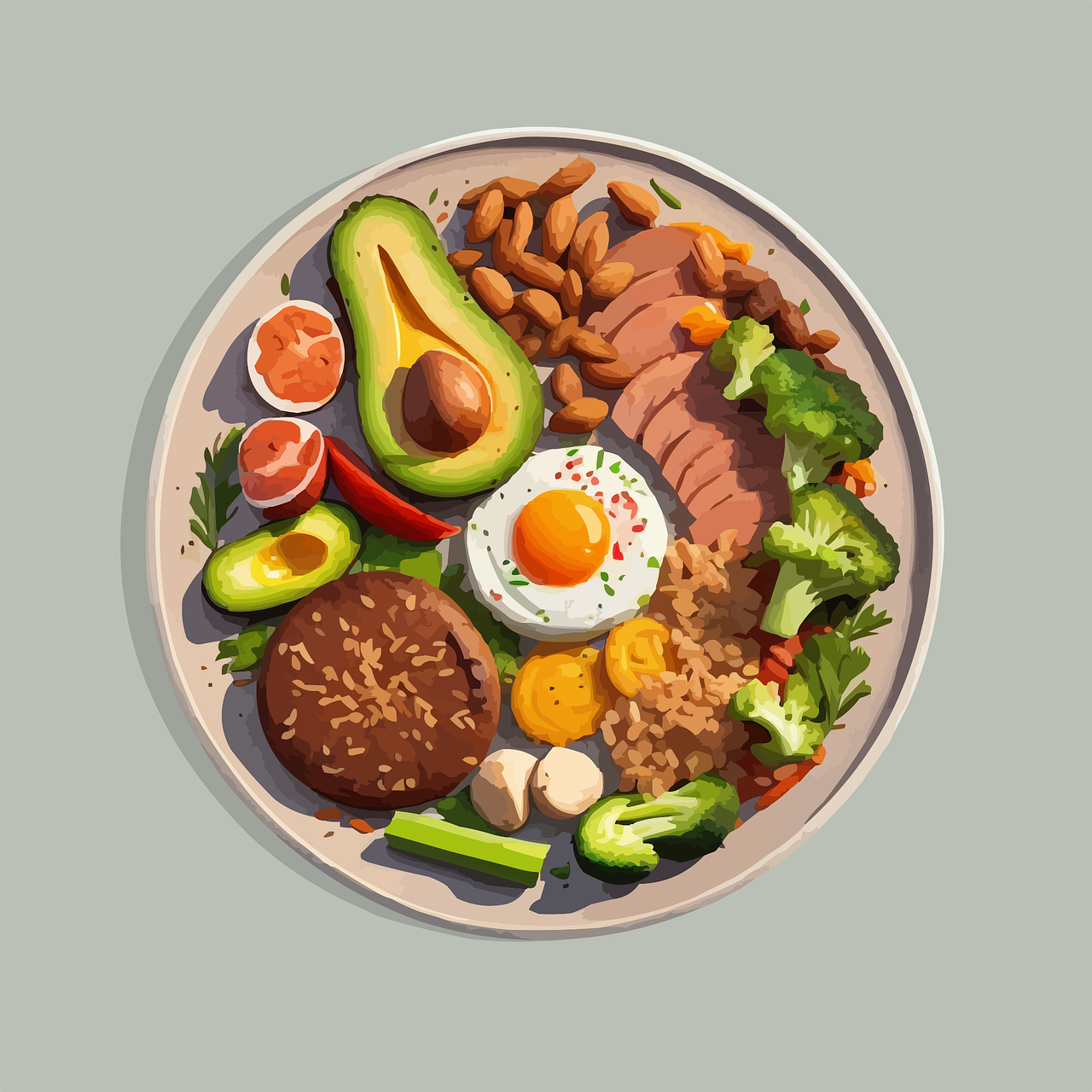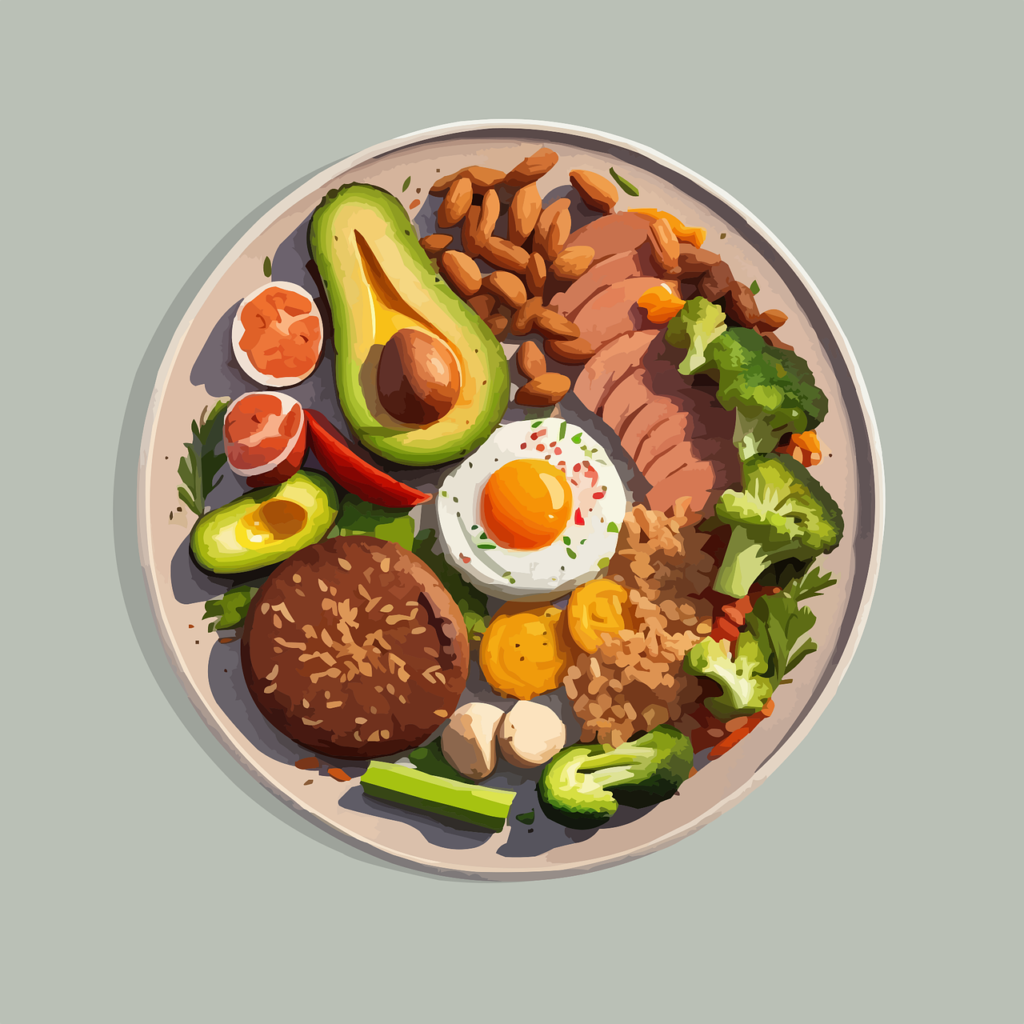
Maintaining a healthy diet is essential for overall well-being. However, with so many different types of diets available, it can be challenging to determine which one is the healthiest. Some diets may focus on reducing fat intake, while others may emphasize the importance of consuming more fruits and vegetables. With all these options, it’s important to understand what constitutes a healthy diet and which one is the best to follow.
A healthy diet is one that provides the body with all the necessary nutrients it needs to function properly. This includes a balance of macronutrients such as carbohydrates, protein, and fat, as well as micronutrients like vitamins and minerals. A healthy diet also limits the intake of processed foods, added sugars, and unhealthy fats.
There are numerous diets that claim to be the healthiest, such as the Mediterranean diet, vegetarian diet, and paleo diet, to name a few. Each of these diets has its own unique approach to healthy eating. In this article, we will explore the different types of diets and their potential benefits and drawbacks to help you determine which one may be the healthiest for you.
Defining a Healthy Diet
A healthy diet is one that provides the body with all the necessary nutrients it needs to function optimally. It should include a variety of foods from all the major food groups, including fruits, vegetables, whole grains, lean proteins, and healthy fats.
Fruits and vegetables are an important part of a healthy diet because they are rich in vitamins, minerals, and fiber. Whole grains are also important because they provide the body with complex carbohydrates, which are a good source of energy. Lean proteins, such as chicken, fish, and beans, provide the body with essential amino acids that are necessary for building and repairing tissues.
Healthy fats, such as those found in nuts, seeds, and avocados, are important for maintaining good health. They help to lower cholesterol levels and reduce the risk of heart disease.
It is also important to limit the intake of foods that are high in saturated and trans fats, added sugars, and sodium. These types of foods can increase the risk of chronic diseases, such as heart disease, diabetes, and high blood pressure.
Overall, a healthy diet is one that is balanced, varied, and provides the body with all the necessary nutrients it needs to function optimally.
Macronutrients
Carbohydrates
Carbohydrates are an essential macronutrient that provides energy to the body. They are found in foods such as fruits, vegetables, grains, and dairy products. Carbohydrates are composed of sugars, starches, and fibers. Simple carbohydrates, such as sugar, are quickly absorbed by the body and can cause a rapid spike in blood sugar levels. Complex carbohydrates, such as whole grains, are absorbed more slowly and provide sustained energy.
Proteins
Proteins are essential for building and repairing tissues in the body. They are found in foods such as meat, fish, eggs, and legumes. Proteins are composed of amino acids, which are the building blocks of the body. Some amino acids can be produced by the body, while others must be obtained through the diet. It is important to consume a variety of protein sources to ensure that all essential amino acids are obtained.
Fats
Fats are an important macronutrient that provides energy and helps with the absorption of vitamins. They are found in foods such as nuts, seeds, oils, and fatty fish. Fats are composed of fatty acids, which can be saturated or unsaturated. Saturated fats are typically solid at room temperature and are found in foods such as butter and cheese. Unsaturated fats are typically liquid at room temperature and are found in foods such as olive oil and avocado.
Overall, a healthy diet should include a balance of all three macronutrients. It is important to choose nutrient-dense sources of carbohydrates, proteins, and fats, and to consume them in appropriate portions.
Micronutrients
Vitamins
Vitamins are essential micronutrients that the body needs in small amounts to function properly. They play a crucial role in maintaining good health and preventing disease. There are 13 essential vitamins, each with a unique function in the body. Some of the most important vitamins include:
- Vitamin A: Essential for vision, immune function, and skin health.
- Vitamin C: An antioxidant that helps boost immunity, promote healthy skin, and aid in wound healing.
- Vitamin D: Helps the body absorb calcium and maintain bone health.
- Vitamin E: An antioxidant that helps protect cells from damage and supports immune function.
- Vitamin K: Essential for blood clotting and bone health.
A balanced diet that includes a variety of fruits, vegetables, whole grains, and lean proteins can provide all the vitamins necessary for good health.
Minerals
Minerals are also essential micronutrients that the body needs to function properly. They play a role in building strong bones, transmitting nerve impulses, and regulating metabolism. Some important minerals include:
- Calcium: Essential for building and maintaining strong bones.
- Iron: Necessary for the production of red blood cells and oxygen transport.
- Magnesium: Helps regulate muscle and nerve function, blood sugar levels, and blood pressure.
- Potassium: Helps regulate fluid balance, muscle contractions, and nerve signals.
- Zinc: Essential for immune function, wound healing, and cell growth.
A diet that includes a variety of whole foods such as nuts, seeds, leafy greens, and lean proteins can provide all the necessary minerals for good health.
Dietary Patterns
Mediterranean Diet
The Mediterranean diet is a dietary pattern that is based on the traditional eating habits of people in countries bordering the Mediterranean Sea. This diet emphasizes the consumption of fruits, vegetables, whole grains, legumes, nuts, seeds, fish, and olive oil. It also includes moderate amounts of dairy products, poultry, and eggs. Red meat and sweets are consumed in moderation.
Research has shown that following a Mediterranean diet may help reduce the risk of heart disease, stroke, and certain types of cancer. This diet is also associated with a lower risk of cognitive decline and may help improve overall mental health.
Plant-Based Diet
A plant-based diet is a dietary pattern that emphasizes the consumption of whole, minimally processed plant foods, such as fruits, vegetables, whole grains, legumes, nuts, and seeds. This diet may or may not include small amounts of animal products.
Research has shown that following a plant-based diet may help reduce the risk of chronic diseases, such as heart disease, type 2 diabetes, and certain types of cancer. This diet is also associated with a lower risk of obesity and may help improve overall gut health.
DASH Diet
The DASH (Dietary Approaches to Stop Hypertension) diet is a dietary pattern that emphasizes the consumption of fruits, vegetables, whole grains, low-fat dairy products, lean meats, fish, and nuts. This diet is low in saturated fat, cholesterol, and sodium.
Research has shown that following a DASH diet may help lower blood pressure and reduce the risk of heart disease, stroke, and certain types of cancer. This diet is also associated with a lower risk of developing type 2 diabetes and may help improve overall kidney function.
Importance of Fiber
Fiber is an important component of a healthy diet. It is a type of carbohydrate that cannot be digested by the human body. Instead, it passes through the digestive system relatively intact, providing a range of health benefits.
Fiber can help regulate bowel movements and prevent constipation. It can also lower cholesterol levels and reduce the risk of heart disease. Additionally, fiber can help control blood sugar levels and may reduce the risk of developing type 2 diabetes.
There are two types of fiber: soluble and insoluble. Soluble fiber dissolves in water and forms a gel-like substance in the digestive tract. It can help lower cholesterol levels and regulate blood sugar levels. Good sources of soluble fiber include oats, barley, beans, and fruits such as apples and oranges.
Insoluble fiber does not dissolve in water and passes through the digestive system relatively intact. It can help prevent constipation and promote regular bowel movements. Good sources of insoluble fiber include whole grains, nuts, and vegetables such as broccoli and carrots.
It is important to consume a variety of high-fiber foods as part of a healthy diet. The recommended daily intake of fiber for adults is 25-30 grams. However, many people do not consume enough fiber in their diets. Adding more fiber-rich foods to meals and snacks can be a simple and effective way to improve overall health.
Hydration and Health
Staying hydrated is essential for maintaining good health. Water is necessary for many bodily functions, including regulating body temperature, removing waste, and transporting nutrients.
Dehydration can lead to a range of health problems, including headaches, fatigue, and constipation. It can also affect cognitive function and mood.
While there is no one-size-fits-all recommendation for how much water to drink, it is generally recommended to drink at least eight 8-ounce glasses of water per day. However, individual needs may vary based on factors such as activity level, climate, and overall health.
In addition to water, other hydrating beverages such as herbal tea, coconut water, and fruit-infused water can also contribute to overall hydration. However, it is important to limit the intake of sugary and caffeinated beverages, as they can have a diuretic effect and contribute to dehydration.
Overall, staying hydrated is a simple yet crucial component of a healthy diet. By making hydration a priority and choosing hydrating beverages, individuals can support their overall health and well-being.
Role of Probiotics and Gut Health
Probiotics are live microorganisms that are beneficial to the human body, especially the gut. They are found in certain foods and supplements and can help maintain a healthy balance of bacteria in the gut.
Studies have shown that probiotics can improve digestive health, boost the immune system, and even reduce the risk of certain diseases. They can also help alleviate symptoms of gastrointestinal disorders such as irritable bowel syndrome (IBS) and inflammatory bowel disease (IBD).
Consuming probiotics can be especially beneficial for individuals who have taken antibiotics, as antibiotics can disrupt the natural balance of bacteria in the gut. Probiotics can help restore this balance and reduce the risk of antibiotic-associated diarrhea.
In addition to consuming probiotics, maintaining a healthy gut environment is also important for overall health. This can be achieved through a balanced diet rich in fiber and fermented foods, as well as regular exercise and stress management.
Overall, incorporating probiotics and promoting gut health can be an important aspect of a healthy diet. However, it is important to consult with a healthcare professional before making any significant changes to your diet or supplement regimen.
Balancing Calories
Maintaining a healthy weight is important for overall health and well-being. To achieve this, it’s important to balance the number of calories consumed with the number of calories burned through physical activity.
One way to balance calories is to choose nutrient-dense foods that are lower in calories. These include fruits, vegetables, whole grains, lean proteins, and low-fat dairy products. These foods provide essential nutrients while also helping to keep calories in check.
Another way to balance calories is to watch portion sizes. Eating larger portions than necessary can lead to overconsumption of calories, even if the foods are healthy choices. Using smaller plates and measuring portions can help with portion control.
In addition to choosing nutrient-dense foods and watching portion sizes, it’s important to limit foods and drinks that are high in added sugars, saturated and trans fats, and sodium. These include sugary drinks, fried foods, processed snacks, and high-fat meats.
Overall, balancing calories is an important part of a healthy diet. By choosing nutrient-dense foods, watching portion sizes, and limiting unhealthy choices, individuals can achieve and maintain a healthy weight while also supporting overall health and well-being.
Sustainable Eating Practices
Sustainable eating practices refer to making food choices that are not only healthy for the body but also for the environment. These practices involve consuming foods that are produced in ways that minimize harm to the environment and promote animal welfare.
One way to achieve sustainable eating practices is by consuming plant-based foods. Plant-based foods, such as fruits, vegetables, whole grains, and legumes, require fewer resources to produce than animal-based foods. Additionally, plant-based foods are associated with a lower risk of chronic diseases such as heart disease, type 2 diabetes, and certain types of cancer.
Another sustainable eating practice is choosing foods that are in season and locally sourced. This reduces the carbon footprint associated with transportation and storage of food. It also supports local farmers and the local economy.
Consuming sustainably sourced fish and seafood is another way to promote sustainable eating practices. This involves choosing seafood that is caught or farmed in ways that minimize harm to the environment and protect fish populations.
Overall, sustainable eating practices involve making conscious food choices that promote health and sustainability. By consuming plant-based foods, locally sourced produce, and sustainably sourced fish and seafood, individuals can make a positive impact on both their health and the environment.
Impact of Diet on Chronic Diseases
A healthy diet can help prevent and manage chronic diseases. Chronic diseases are long-lasting conditions that can lead to disability and death. Some examples of chronic diseases include heart disease, diabetes, and cancer.
Research has shown that certain dietary patterns can lower the risk of chronic diseases. For example, a diet rich in fruits, vegetables, whole grains, and lean proteins can help prevent heart disease. A diet low in saturated and trans fats, added sugars, and sodium can also help prevent heart disease.
Similarly, a diet rich in fiber and whole grains can help prevent and manage diabetes. Foods that are high in fiber, such as fruits, vegetables, and whole grains, can help regulate blood sugar levels.
In addition, some studies have suggested that a diet rich in fruits, vegetables, and whole grains may help reduce the risk of certain types of cancer. However, more research is needed to confirm these findings.
Overall, following a healthy diet can have a positive impact on chronic diseases. It is important to consult with a healthcare provider or registered dietitian to determine the best dietary pattern for individual needs and health goals.
Customizing Diets for Individual Needs
When it comes to following a healthy diet, there is no one-size-fits-all approach. Different people have different nutritional needs based on factors such as age, gender, weight, activity level, and health conditions. Therefore, it is important to customize diets to meet individual needs.
One way to customize a diet is to consult with a registered dietitian. A dietitian can assess an individual’s nutritional needs and create a personalized meal plan that takes into account their lifestyle, preferences, and health goals. They can also provide guidance on portion sizes, food choices, and meal timing.
Another way to customize a diet is to consider any specific health conditions or dietary restrictions. For example, someone with high blood pressure may need to limit their sodium intake, while someone with celiac disease may need to avoid gluten. It is important to work with a healthcare provider to determine any necessary dietary modifications.
In addition to consulting with a dietitian and considering health conditions, individuals can also make small changes to their diet to meet their individual needs. For example, someone who is physically active may need more carbohydrates to fuel their workouts, while someone trying to lose weight may need to reduce their overall calorie intake.
Overall, customizing a diet to meet individual needs is important for achieving optimal health and wellness. By working with a healthcare provider and making small changes to their diet, individuals can create a personalized meal plan that meets their nutritional needs and supports their health goals.
Considerations for Special Populations
When it comes to following a healthy diet, there are certain considerations that need to be taken into account for special populations. These populations include children, pregnant women, older adults, and individuals with specific health conditions.
Children
Children have different nutritional needs than adults, and it’s important to ensure that they are getting all the nutrients they need for proper growth and development. A healthy diet for children should include a variety of fruits, vegetables, whole grains, lean proteins, and low-fat dairy products. It’s also important to limit their intake of sugary and processed foods.
Pregnant Women
Pregnant women have increased nutritional needs to support the growth and development of their baby. A healthy diet for pregnant women should include plenty of fruits, vegetables, whole grains, lean proteins, and low-fat dairy products. It’s also important to ensure adequate intake of folic acid, iron, and calcium. Pregnant women should avoid certain foods such as raw or undercooked meats, fish with high levels of mercury, and unpasteurized dairy products.
Older Adults
Older adults may have different nutritional needs due to changes in metabolism and digestion. A healthy diet for older adults should include plenty of fruits, vegetables, whole grains, lean proteins, and low-fat dairy products. It’s also important to ensure adequate intake of calcium and vitamin D for bone health. Older adults should limit their intake of sodium and saturated fats.
Individuals with Specific Health Conditions
Individuals with specific health conditions such as diabetes, heart disease, or high blood pressure may need to follow a specialized diet to manage their condition. A healthy diet for individuals with these conditions should be tailored to their specific needs and may include limiting certain foods or nutrients. It’s important for individuals with specific health conditions to work with a healthcare professional or registered dietitian to develop a healthy eating plan.
Food Sources and Quality
The healthiest diet is one that incorporates a variety of high-quality foods from different sources. Eating a diet rich in whole, unprocessed foods is key to maintaining good health. These foods include fruits, vegetables, whole grains, lean proteins, and healthy fats.
When it comes to fruits and vegetables, it’s important to choose a variety of colors to ensure a range of nutrients. For example, dark leafy greens like spinach and kale are high in iron and vitamin K, while orange vegetables like sweet potatoes and carrots are rich in vitamin A and beta-carotene.
Whole grains like brown rice, quinoa, and whole wheat bread are a good source of fiber, vitamins, and minerals. Lean proteins like chicken, fish, and legumes provide essential amino acids, while healthy fats like avocado, nuts, and olive oil can help reduce inflammation and improve heart health.
It’s also important to pay attention to the quality of the foods you eat. Choosing organic, grass-fed, and wild-caught options can help reduce exposure to pesticides and antibiotics, while also providing more nutrients. Avoiding processed and packaged foods that are high in sugar, salt, and unhealthy fats is also important for maintaining good health.
Overall, following a healthy diet that incorporates a variety of high-quality foods from different sources can help promote good health and reduce the risk of chronic diseases.
Dietary Supplements
Dietary supplements are products that contain vitamins, minerals, herbs, amino acids, or other dietary ingredients that are intended to supplement the diet. While they can be beneficial for people who have nutrient deficiencies or other health issues, they are not a substitute for a healthy diet.
Some dietary supplements have been found to have health benefits, such as omega-3 fatty acids for heart health and vitamin D for bone health. However, it is important to note that not all supplements are safe or effective. Some supplements can interact with medications or have side effects, and the quality and potency of supplements can vary widely.
It is recommended to speak with a healthcare provider before taking any dietary supplements, especially if you have a medical condition or are taking medications. They can help determine if a supplement is safe and appropriate for you, and can also provide guidance on dosages and potential interactions with other medications.
Overall, while dietary supplements can be a useful addition to a healthy diet, they should not be relied upon as a sole source of nutrients. It is important to prioritize a varied and balanced diet that includes plenty of fruits, vegetables, whole grains, lean proteins, and healthy fats.
Frequently Asked Questions
Which diet is considered optimal for overall longevity?
There is no one-size-fits-all answer to this question, as different diets may be more suitable for different individuals. However, studies have shown that diets that emphasize whole plant foods, such as the Mediterranean diet and plant-based diets, have been associated with better health outcomes and increased longevity.
What are the core principles of the Mediterranean diet?
The Mediterranean diet is characterized by high consumption of fruits, vegetables, whole grains, legumes, nuts, and olive oil, moderate consumption of fish and poultry, and low consumption of red meat, sweets, and processed foods. It also emphasizes physical activity and social eating habits.
How does the DASH diet contribute to health improvement?
The DASH (Dietary Approaches to Stop Hypertension) diet is designed to help lower blood pressure and reduce the risk of heart disease. It emphasizes a diet rich in fruits, vegetables, whole grains, low-fat dairy products, lean meats, and nuts, while limiting sodium, saturated and trans fats, and sweets.
What dietary patterns contribute to effective weight loss?
Effective weight loss can be achieved through a variety of dietary patterns, including low-carbohydrate diets, low-fat diets, and diets that emphasize protein and fiber. However, it is important to choose a diet that is sustainable and provides adequate nutrition.
Which country’s dietary habits are associated with the best health outcomes?
Studies have shown that the traditional dietary habits of countries such as Japan, Greece, and Italy are associated with better health outcomes and increased longevity. These diets typically emphasize whole plant foods, seafood, and healthy fats, while limiting processed foods and red meat.
How should a daily diet be structured to maximize health benefits?
A healthy daily diet should emphasize a variety of whole plant foods, including fruits, vegetables, whole grains, legumes, nuts, and seeds. It should also include moderate amounts of lean protein, healthy fats, and low-fat dairy products, while limiting processed foods, added sugars, and sodium. Adequate hydration and physical activity are also important components of a healthy diet.







